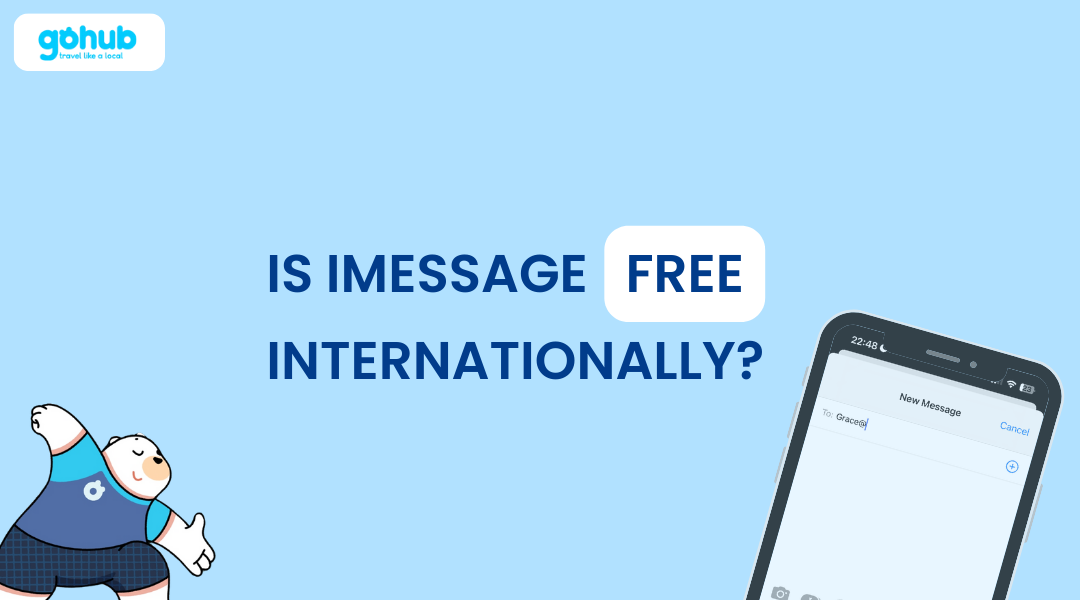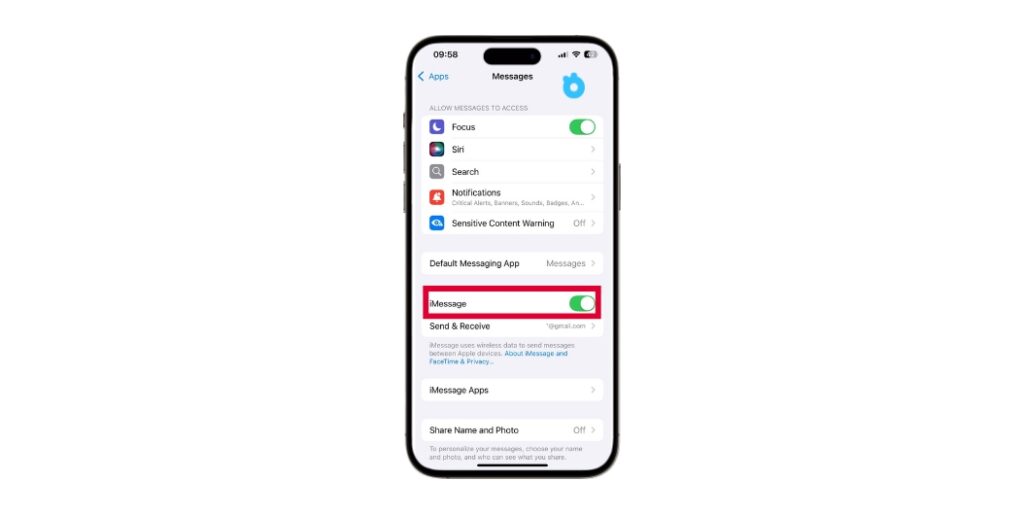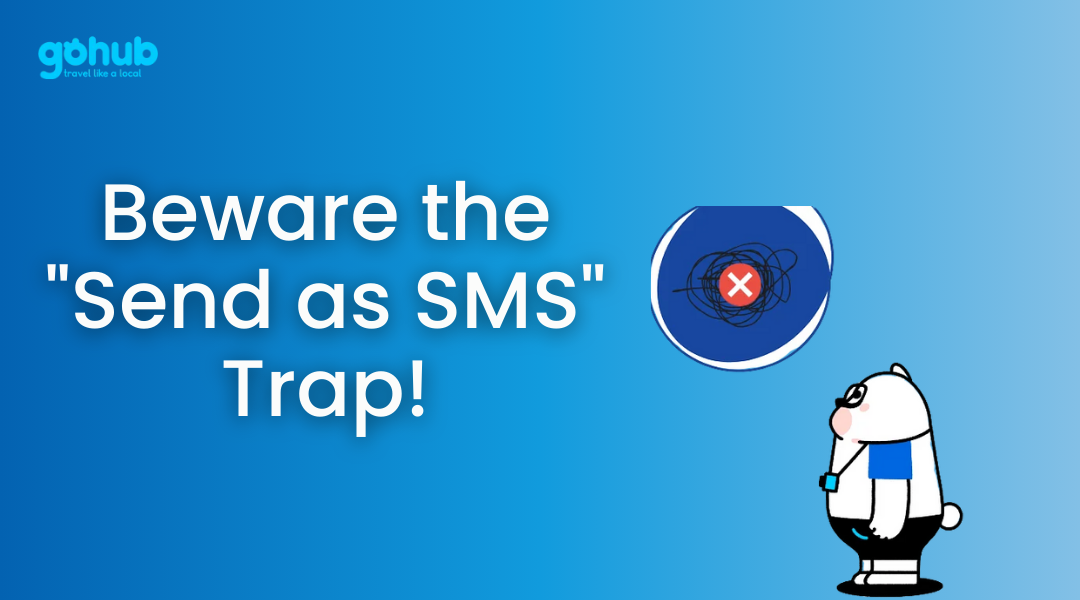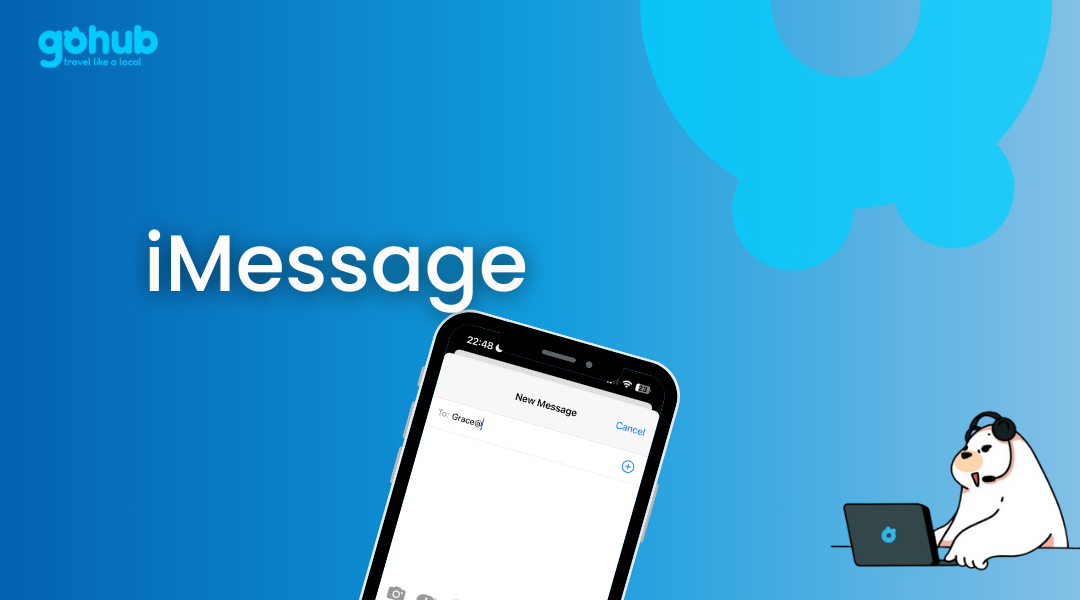Getting ready for a big trip abroad? Whether you’re on a work assignment, studying overseas, or just exploring the world, staying connected with family and friends matters — and you shouldn’t have to worry about huge messaging bills.
If you’re an Apple user, you’ve probably wondered: Is iMessage free internationally?
Short answer: Yes — mostly! But to really use iMessage internationally without surprise charges, you need to know a few important tips.
In this easy-to-follow guide, we’ll cover:
- How iMessage works differently from normal SMS
- When it’s 100% free — and when you might accidentally pay
- How to set up iMessage before your trip
How affordable travel eSIMs can help you save money while traveling
Whether you’re texting from a coffee shop in Paris or video-calling family from a beach in Bali, here’s how to stay connected safely and affordably using iMessage abroad.

I. Understanding the Basics: iMessage vs. SMS
Before we dive into costs, let’s quickly clear up the difference between iMessage and traditional SMS/MMS.

What is SMS/MMS?
- SMS (Short Message Service): Regular text messages sent over your mobile carrier’s network.
- MMS (Multimedia Messaging Service): Messages that include pictures, videos, or other media.
- Important: SMS/MMS are tied to your phone number and can incur international charges when sent abroad.
✅ Learn more about the difference between iMessage and SMS/MMS here.
What is iMessage?
- iMessage is Apple’s messaging service, used only between iPhones, iPads, and Macs.
- Sent over the Internet: It uses Wi-Fi or cellular data, not your mobile network.
- Linked to your Apple ID or phone number: You can send/receive messages even if your phone number changes.
- Easy way to tell:
- Green bubbles = SMS (may cost extra)
- Blue bubbles = iMessage (free over the Internet)
✅ Here’s a helpful breakdown of iMessage costs when traveling.
In short: If your messages are showing up in blue bubbles, you’re using iMessage — no worries about international SMS fees if you’re connected to Wi-Fi!
II. The Cost Factor: Is iMessage Free Internationally?
When it comes to using iMessage abroad, the answer is: mostly free — but it depends on your connection.
Here’s the full breakdown you need to stay worry-free:
1. iMessage Over Wi-Fi: 100% Free
- When you’re connected to a Wi-Fi network, sending and receiving iMessages costs nothing.
- This applies anywhere in the world — hotel Wi-Fi, airport lounges, cafés — totally free from Apple.
Best Tip: Always try to use Wi-Fi whenever possible when traveling!

2. iMessage Over Cellular Data: Free (But Watch Your Data!)
- iMessage itself is free — Apple doesn’t charge you per message.
- However: It uses your cellular data if Wi-Fi isn’t available.
- If you’re roaming internationally without a travel plan, data roaming charges from your mobile carrier can skyrocket.
💡 Best move: Grab a Gohub eSIM to get cheap local data and avoid roaming nightmares.
Best Tip:
Use a local eSIM or a travel eSIM (like GoHub, Airalo, Saily) to get affordable data while abroad.
Much cheaper than your home carrier’s roaming rates!
3. Beware the “Send as SMS” Trap!
- If iMessage can’t deliver a message (e.g., poor internet), your iPhone might automatically send it as a normal SMS (green bubble).
- Problem: SMS over international networks = expensive.

Best Tip:
Turn OFF the “Send as SMS” option:
Go to Settings > Messages > Toggle OFF ‘Send as SMS’.
This forces your phone to only send messages via iMessage or wait until Wi-Fi/data is available.
Quick Recap:
- Wi-Fi = Free iMessage worldwide.
- Cellular data = Free iMessage, but beware of roaming data fees.
- SMS fallback = Big hidden charges. Disable it before you fly!
III. Setting Up iMessage for International Travel: Essential Steps
Before you jet off, make sure iMessage is ready to save you money and headaches abroad. Here’s your simple checklist:
Step 1: Turn ON iMessage
- Go to Settings > Messages.
- Make sure the iMessage toggle is switched ON.
This activates Apple’s messaging service — no iMessage, no free international chats!
Step 2: Connect Your Apple ID
- In Settings > Messages > Send & Receive, double-check:
- Your Apple ID email is selected.
- Not just your phone number.
Why?
If you switch SIM cards abroad (like using a local eSIM), your phone number might change, but your Apple ID stays the same — keeping your iMessages flowing without interruption.
Step 3: Connect to the Internet (Wi-Fi is Best!)
- Wi-Fi = Free iMessaging anywhere.
- Cellular Data = Fine too, but watch for data roaming charges.
- Best travel hack:
Install a travel eSIM (like GoHub eSIM ) for cheap local data — no more shocking bills!
Pro Tip Reminder:
GoHub offers 50% cheaper rates than most global competitors and 24/7 multilingual support if you ever need help setting up iMessage with your new eSIM.
Step 4: After Installing a New SIM or eSIM, Reset iMessage (if needed)
- If iMessage acts weird after swapping SIMs or adding an eSIM:
- Go to Settings > Messages.
- Toggle iMessage OFF, wait 10 seconds, then toggle it back ON.
- Recheck your Send & Receive settings to confirm your Apple ID is still active.
Pro Tip:
Disable “Send as SMS” while abroad!
- Find it in Settings > Messages.
- Turn it OFF to make sure your iPhone doesn’t accidentally send expensive green SMS texts.
Quick Recap:
- Activate iMessage.
- Connect your Apple ID.
- Prioritize Wi-Fi (or affordable eSIM data).
- Double-check your settings after any SIM/eSIM change.
- Turn OFF “Send as SMS” for full peace of mind.
Traveling for work or school? See how to switch between eSIM plans easily while hopping between countries.
IV. Pro Tips for Using iMessage Abroad Like a Pro
Want flawless iMessaging while traveling? Here’s how to stay connected — without surprise fees!
1. Prioritize Wi-Fi Whenever Possible
- Always connect to trusted Wi-Fi at hotels, cafés, or airports.
- Wi-Fi keeps iMessage 100% free, no matter where you are!
2. Manage Cellular Data Strategically
- Turn off Cellular Data and rely solely on Wi-Fi if you’re worried about roaming charges.
- If you need mobile internet, review your carrier’s international data plans — but beware, they’re often pricey for short trips.
3. Use an eSIM for Affordable Data (Best Move!)
- eSIMs let you download a local data plan before you even land — no swapping physical SIM cards.
- It’s a cheaper, faster, and eco-friendly way to stay connected abroad.
- Pro Tip: For unbeatable value across multiple countries, check out providers like GoHub, Airalo, and Nomad — GoHub specializes in affordable, high-speed travel eSIMs.
4. Be Mindful of Multimedia Usage
- Sending photos and videos eats up more data than plain text.
- Save heavy uploads for when you’re on Wi-Fi.
5. Stay Safe on Public Wi-Fi
- Public Wi-Fi can be risky — always use a VPN (Virtual Private Network) to secure your connection.
6. If You Switch to a Local SIM
- Your phone number might change.
- Remind contacts to use your Apple ID for iMessage — you’ll stay reachable without missing a beat.
7. Quick Fixes If Things Go Wrong
- eSIM Activation Issues: Double-check your provider’s steps and restart your phone.
- Messages Stuck or Failing: Switch Wi-Fi networks or check cellular strength.
- Blue Bubbles Turn Green: Usually means iMessage couldn’t connect. Reconnect to Wi-Fi or check settings.
- Multimedia Not Sending: Large files? Switch to a stronger Wi-Fi connection.
✅ See this real-world Reddit discussion on common iMessage issues overseas.
8. Different Travel Scenarios? No Problem.
- Multi-country travel:
Use regional eSIM plans (like GoHub’s Asia, Europe, or Global packages) for seamless connectivity across borders. - Remote areas:
No Wi-Fi? SMS fallback might cost you — always check your settings to prevent accidental charges. - Group travel (iOS + Android users):
Consider cross-platform apps like WhatsApp to stay in touch with everyone easily.
Pro Traveler Tip:
Use iMessage’s extra features (like stickers, Tapbacks, and iCloud backup) to keep your conversations lively and backed up — even when you’re hopping between countries!
V. iMessage vs. Alternative Messaging Apps for Free International Messaging
iMessage is incredible — if you’re messaging fellow Apple users.
But when your circle includes Android friends or you need broader options for free international messaging, having the right cross-platform apps is essential. Here are the top picks:
1. WhatsApp
- Available on iOS and Android.
- Perfect for free international messaging, voice, and video calls over Wi-Fi or mobile data.
- End-to-end encryption keeps your chats secure and private.
2. Telegram
- Known for lightning-fast messaging and excellent privacy protections.
- A favorite for free international messaging, group chats, and large file transfers.
3. Facebook Messenger
- Seamlessly connects you with anyone on Facebook.
- Supports free messaging and calls globally over Wi-Fi or data.
4. Regional Favorites
- Apps like WeChat (China), LINE (Japan/Thailand), or Viber (Eastern Europe) are vital for free international messaging depending on where you travel or who you communicate with.
Important Reminder:
All these apps, like iMessage, use internet data — so you enjoy free international messaging as long as you’re on Wi-Fi, or minimal cost if you have an affordable data plan.
✅ Need a full comparison? Here’s a detailed iMessage vs messaging apps guide from Apple Community.
Pro Tip: To maximize your free messaging abroad, consider setting up a local eSIM with GoHub. Their affordable, high-speed travel eSIMs make it easy to stay online without the outrageous roaming fees, whether you’re texting in WhatsApp, Messenger, or sending those signature blue iMessages.
VI. FAQ – Using iMessage Internationally
1. Do you get charged for iMessage internationally?
No, iMessage itself does not charge fees. It works over Wi-Fi or mobile data. However, if you use cellular data abroad without a roaming plan or travel eSIM, you may incur roaming charges.
2. Does iMessage work for free overseas?
Yes, iMessage is free anywhere in the world as long as you are connected to Wi-Fi or have a valid mobile data plan. The only cost comes from your internet connection.
3. Why can’t I use iMessage internationally?
Common reasons include:
- No active internet (Wi-Fi or data)
- Roaming disabled on your phone
- Carrier restrictions or SIM/eSIM issues
- Apple ID or iMessage not activated properly
4. Does iMessage cost money to text?
No. iMessage is free to send and receive between Apple devices. If you see green bubbles instead of blue, that means the message was sent as a regular SMS, which may incur charges depending on your carrier.
Buy eSIM for Unlimited iMessage Overseas
VII. Conclusion: Stay Connected with Free International Messaging, Wherever You Go
iMessage is one of the best tools for free international messaging between Apple users — as long as you have a stable internet connection.
By prioritizing Wi-Fi whenever possible, or setting yourself up with affordable local data through an eSIM, you can stay in touch with friends, family, and colleagues around the world — without stressing about expensive roaming bills.
Pro Tip: A travel eSIM from GoHub makes it even easier. With instant activation, high-speed local data, and unbeatable rates, GoHub helps you unlock seamless free international messaging wherever your adventures take you.
Just remember:
- Keep an eye on your iMessage settings.
- Turn off “Send as SMS” to avoid unexpected charges.
- Choose your internet connection wisely.
Stay smart, stay connected, and let iMessage (and GoHub!) power your travels in 2025 and beyond!








